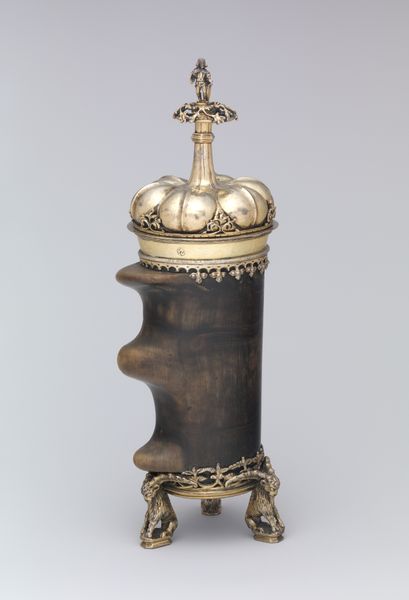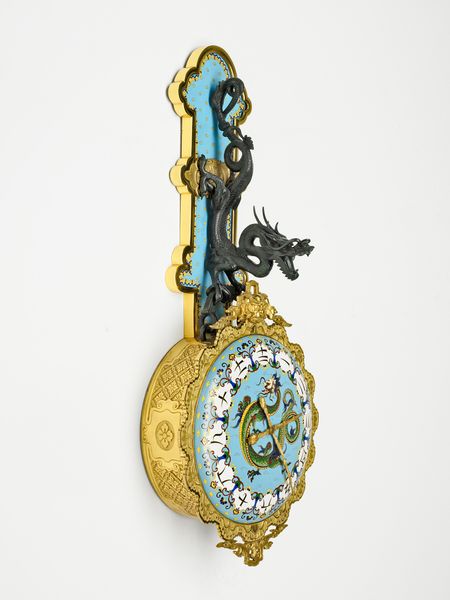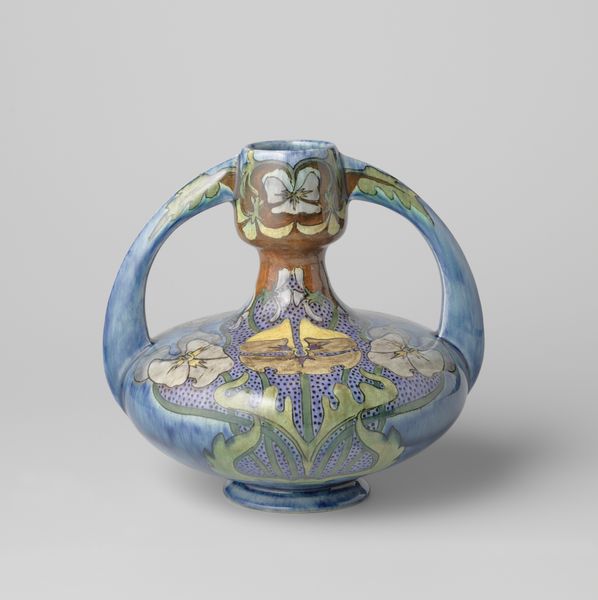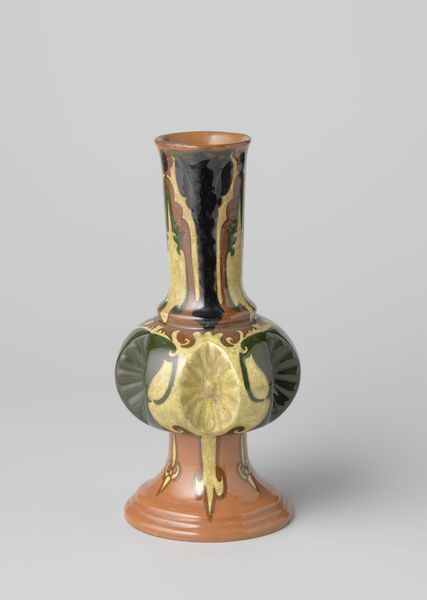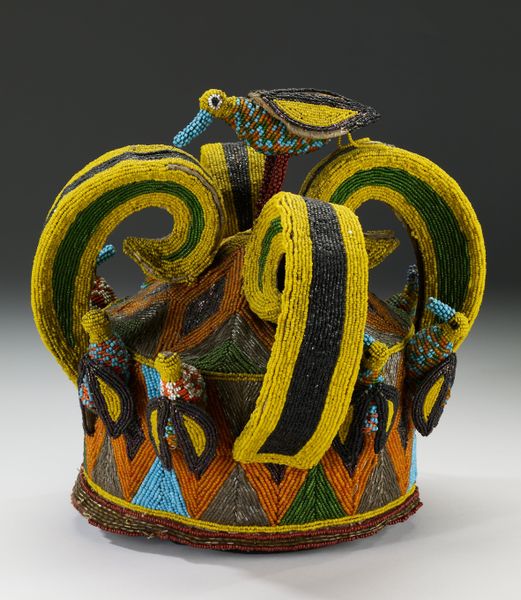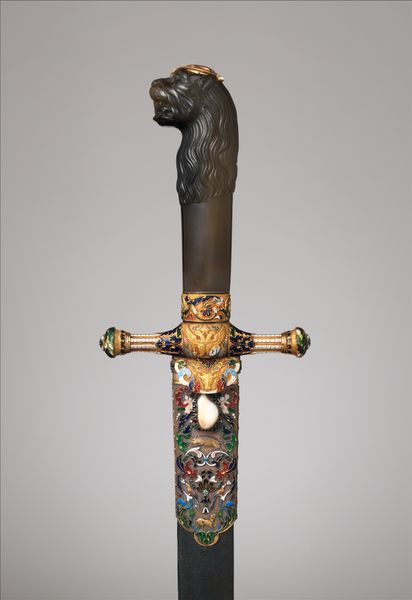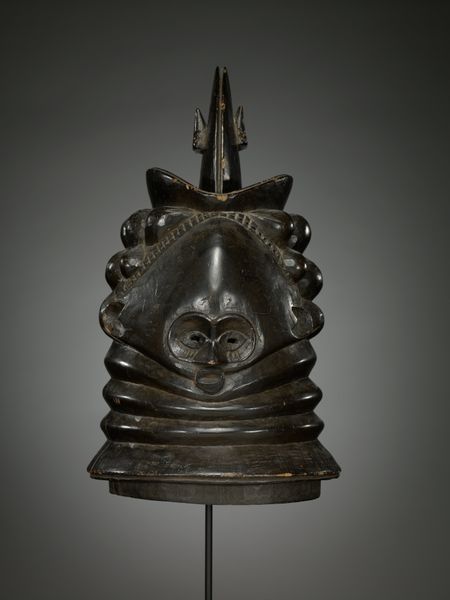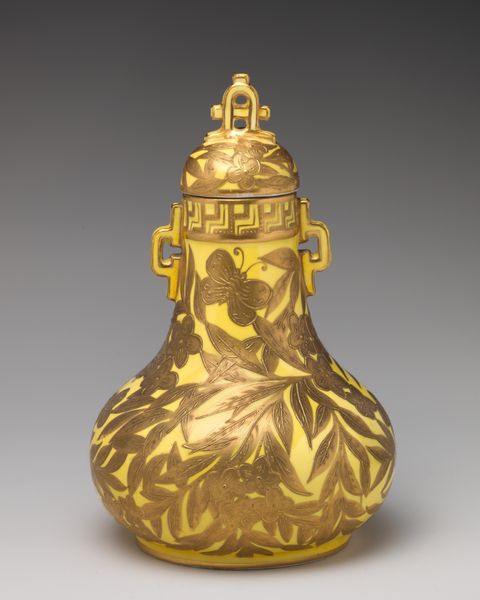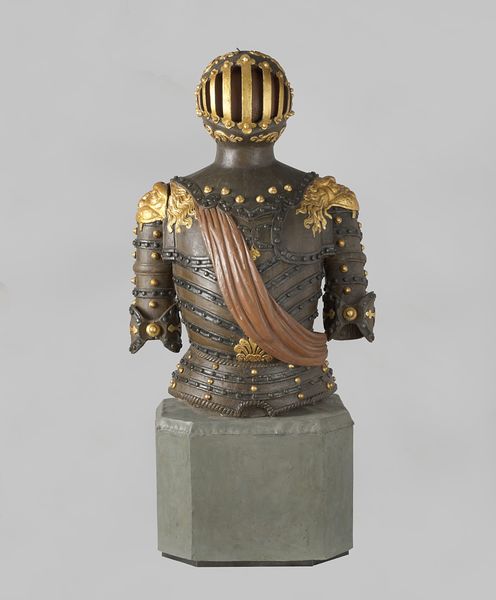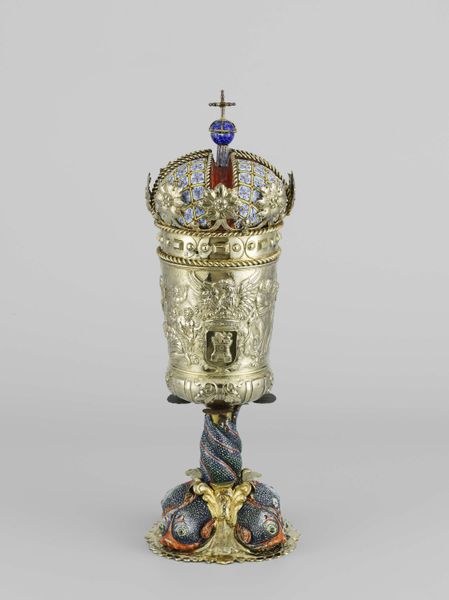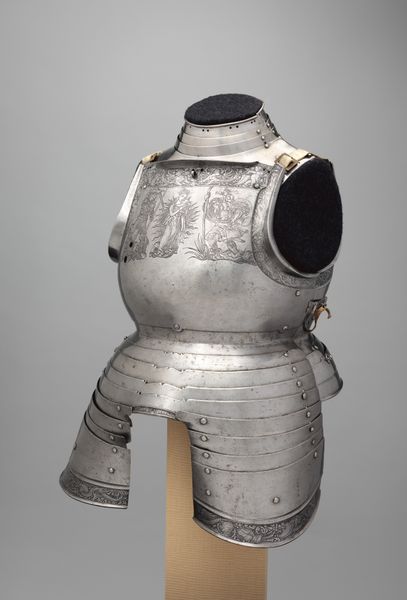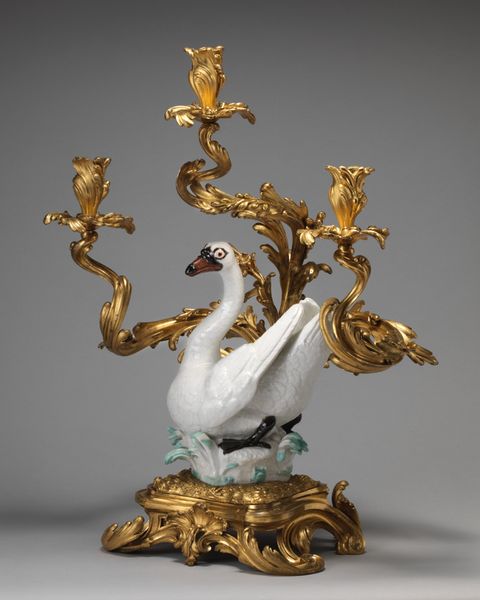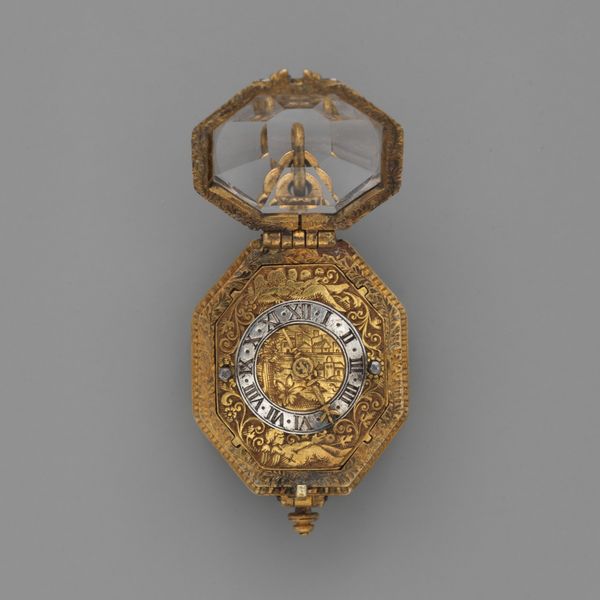
assemblage, ceramic, bronze, sculpture
#
assemblage
#
asian-art
#
ceramic
#
bronze
#
japan
#
sculpture
#
musical-instrument
#
decorative-art
Dimensions: Total H. 62 3/16 × Drum diam 22 in. (158 × 55.9 cm)
Copyright: Public Domain
Curator: Here we have an exquisite "O-daiko" by Kodenji Hayashi, crafted in 1873. The piece is currently housed at the Metropolitan Museum of Art. Editor: Wow, look at that drum! It feels so opulent. The vibrant blues and greens juxtaposed with the rooster on top. It's almost whimsical. Curator: Its vibrant exterior showcases meticulous Japanese craftsmanship and points to interesting dynamics during the Meiji era and the late feudal period of Japan when Japan’s national identity was shifting as the ruling elite embraced western modernization to ensure their ability to defend the Japanese archipelago. We can discuss this piece and place it into broader narratives and intersections around gender, power, and privilege and unpack how those elements manifested and functioned within 19th-century Japanese society. Editor: Indeed, there's such care put into the details. Note how each material comes to play: The smoothness of the ceramics contrasts with the rougher bronze, suggesting a meticulous labor process and traditional practices. What were the social dynamics that contributed to the crafting of this drum? Curator: Consider the social expectations. Who traditionally crafted objects like these? Gender plays an undeniable role, the cultural and historical context shapes and often restricts opportunities available to them. Where did the raw materials come from, and how were they acquired? The Meiji government's attempt at national resurgence also depended on international markets and commerce for acquiring particular materials like the enamels, which were likely acquired through trade with France. It underscores Japan’s move into greater global interactions, specifically its interest in France in relation to its domestic economic and military goals. Editor: This isn’t just a functional drum anymore. We are talking about a piece of fine art reflecting Japan's social, cultural, and historical narratives, so we should also explore what each color used, the placement of certain adornments may signal within a Japanese setting in 1873. This sculpture goes well beyond sound, and can inform new investigations that incorporate critical thought, feminist theory, and sociology. Editor: Thinking about its creation, each material tells a story about resources and labor within Japanese culture. It blurs those boundaries between craftsmanship, materiality, and what exactly we classify as "art." Curator: Absolutely. We are able to discuss how political changes have always shifted material availability, while we also incorporate cultural and gender roles. It makes us see beyond face value and contextualize how this work communicates different forms of representation of labor during its creation. Editor: I'll never look at a drum the same way again!
Comments
No comments
Be the first to comment and join the conversation on the ultimate creative platform.

